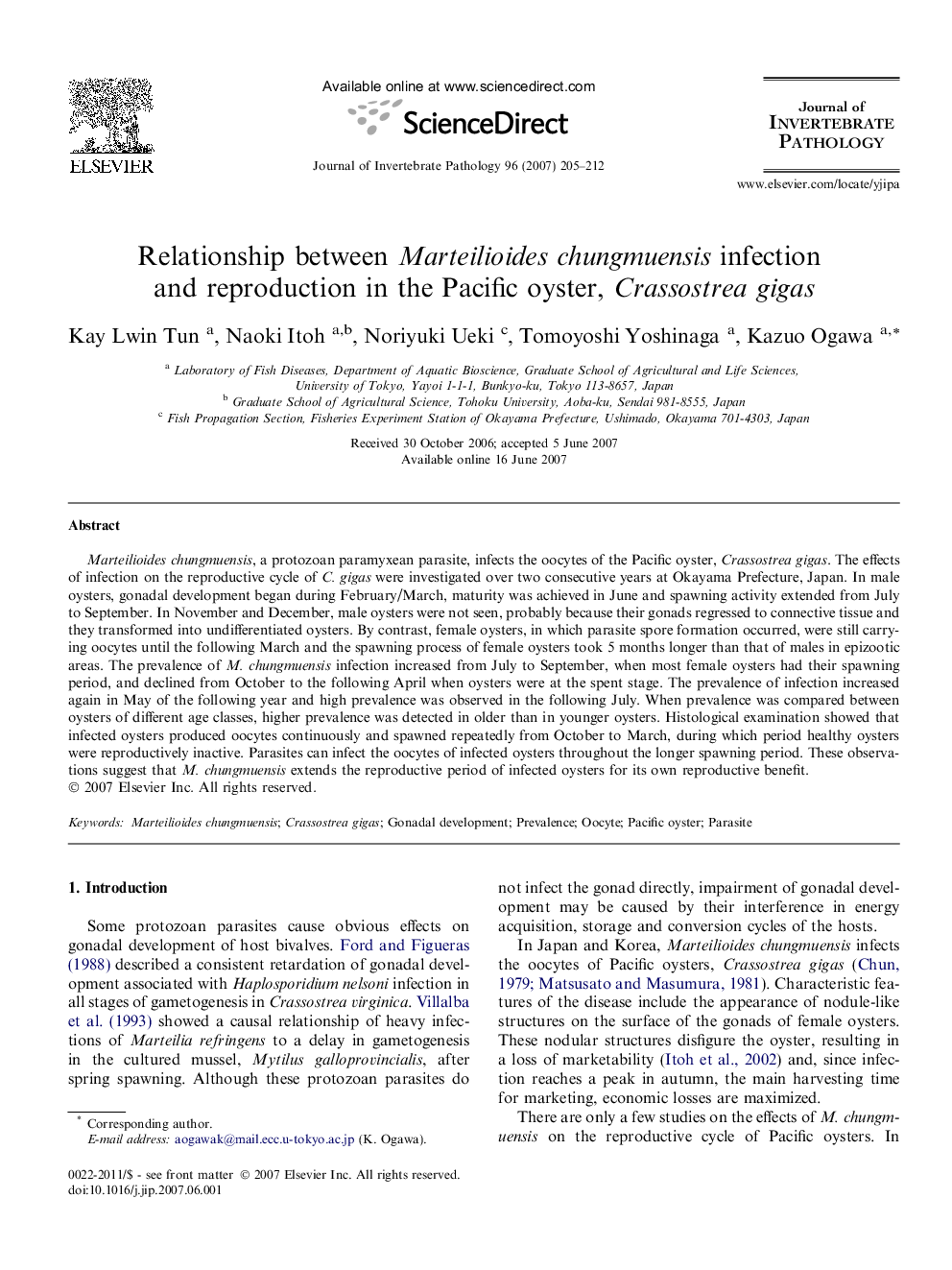| Article ID | Journal | Published Year | Pages | File Type |
|---|---|---|---|---|
| 4558661 | Journal of Invertebrate Pathology | 2007 | 8 Pages |
Abstract
Marteilioides chungmuensis, a protozoan paramyxean parasite, infects the oocytes of the Pacific oyster, Crassostrea gigas. The effects of infection on the reproductive cycle of C. gigas were investigated over two consecutive years at Okayama Prefecture, Japan. In male oysters, gonadal development began during February/March, maturity was achieved in June and spawning activity extended from July to September. In November and December, male oysters were not seen, probably because their gonads regressed to connective tissue and they transformed into undifferentiated oysters. By contrast, female oysters, in which parasite spore formation occurred, were still carrying oocytes until the following March and the spawning process of female oysters took 5 months longer than that of males in epizootic areas. The prevalence of M. chungmuensis infection increased from July to September, when most female oysters had their spawning period, and declined from October to the following April when oysters were at the spent stage. The prevalence of infection increased again in May of the following year and high prevalence was observed in the following July. When prevalence was compared between oysters of different age classes, higher prevalence was detected in older than in younger oysters. Histological examination showed that infected oysters produced oocytes continuously and spawned repeatedly from October to March, during which period healthy oysters were reproductively inactive. Parasites can infect the oocytes of infected oysters throughout the longer spawning period. These observations suggest that M. chungmuensis extends the reproductive period of infected oysters for its own reproductive benefit.
Keywords
Related Topics
Life Sciences
Agricultural and Biological Sciences
Ecology, Evolution, Behavior and Systematics
Authors
Kay Lwin Tun, Naoki Itoh, Noriyuki Ueki, Tomoyoshi Yoshinaga, Kazuo Ogawa,
